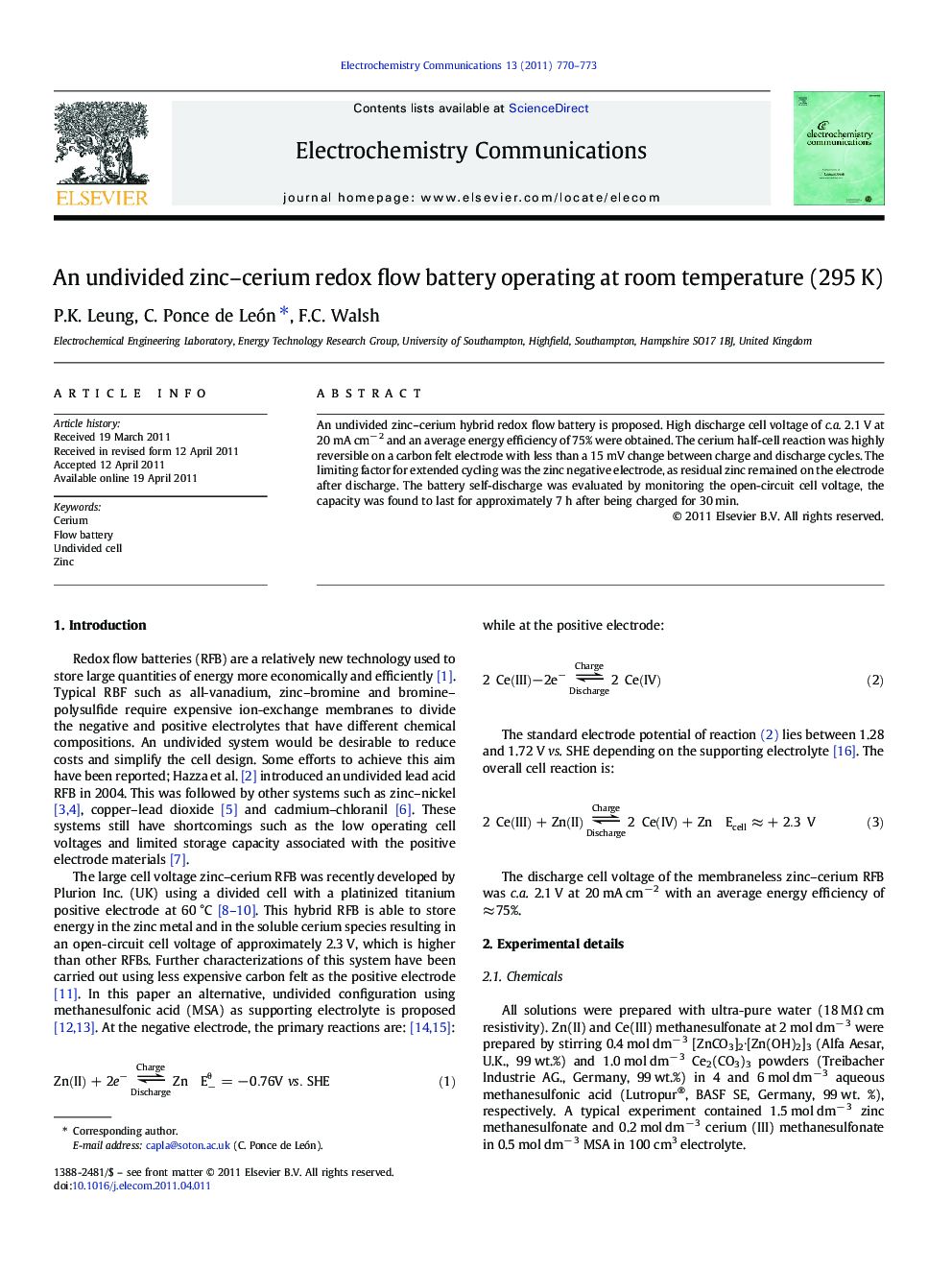| Article ID | Journal | Published Year | Pages | File Type |
|---|---|---|---|---|
| 179970 | Electrochemistry Communications | 2011 | 4 Pages |
An undivided zinc–cerium hybrid redox flow battery is proposed. High discharge cell voltage of c.a. 2.1 V at 20 mA cm− 2 and an average energy efficiency of 75% were obtained. The cerium half-cell reaction was highly reversible on a carbon felt electrode with less than a 15 mV change between charge and discharge cycles. The limiting factor for extended cycling was the zinc negative electrode, as residual zinc remained on the electrode after discharge. The battery self-discharge was evaluated by monitoring the open-circuit cell voltage, the capacity was found to last for approximately 7 h after being charged for 30 min.
Graphical abstractFigure optionsDownload full-size imageDownload as PowerPoint slideResearch Highlights► Highest open-circuit cell voltage among other proposed flow battery chemistries. ► High energy efficiency at charge/discharge current density of 20 mA cm-2. ► Undivided configuration that simplifies cell design and reduce maintenance and cost. ► Self-discharge of the undivided Zn/Ce compares well with all-V redox flow battery.
